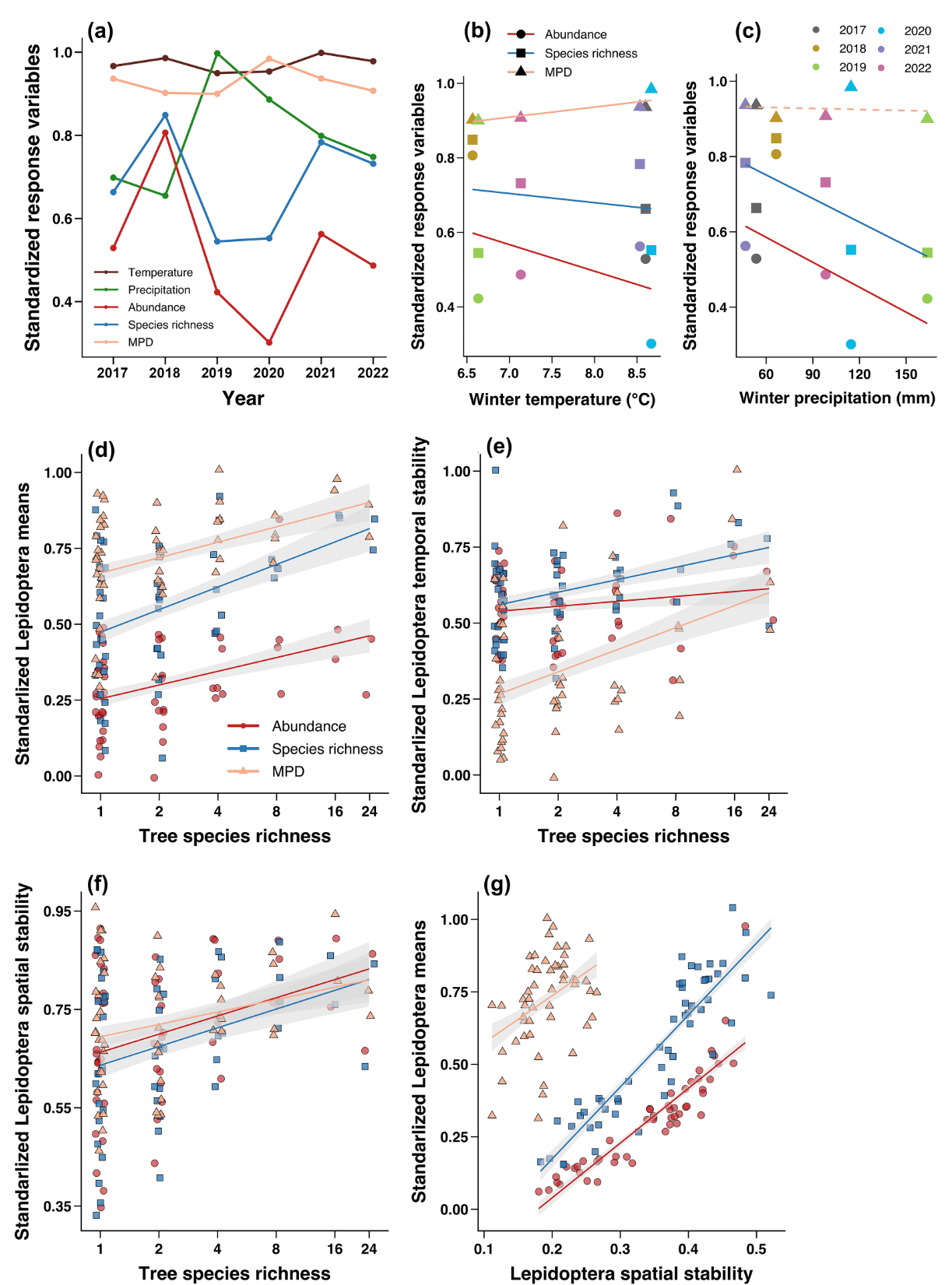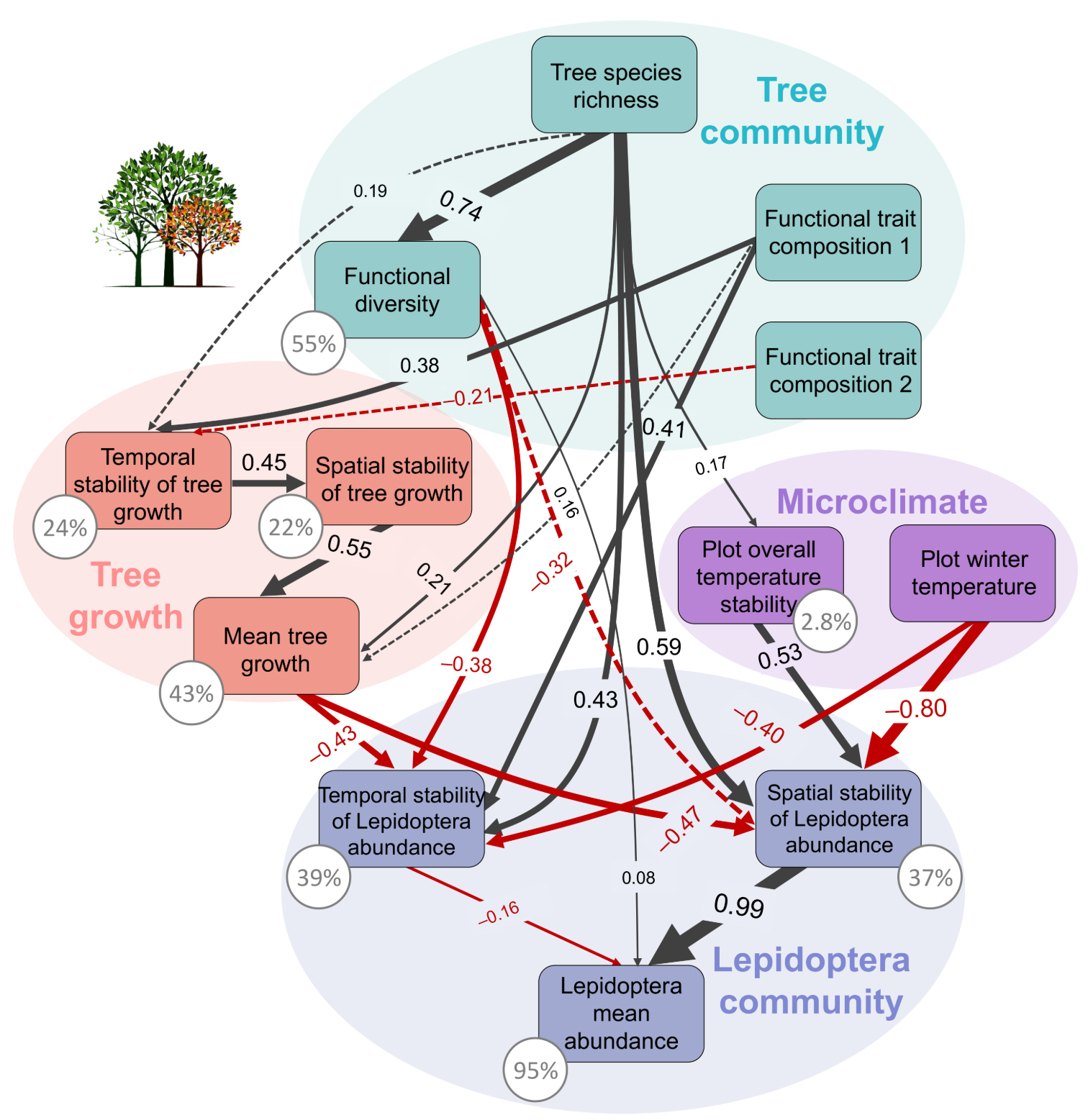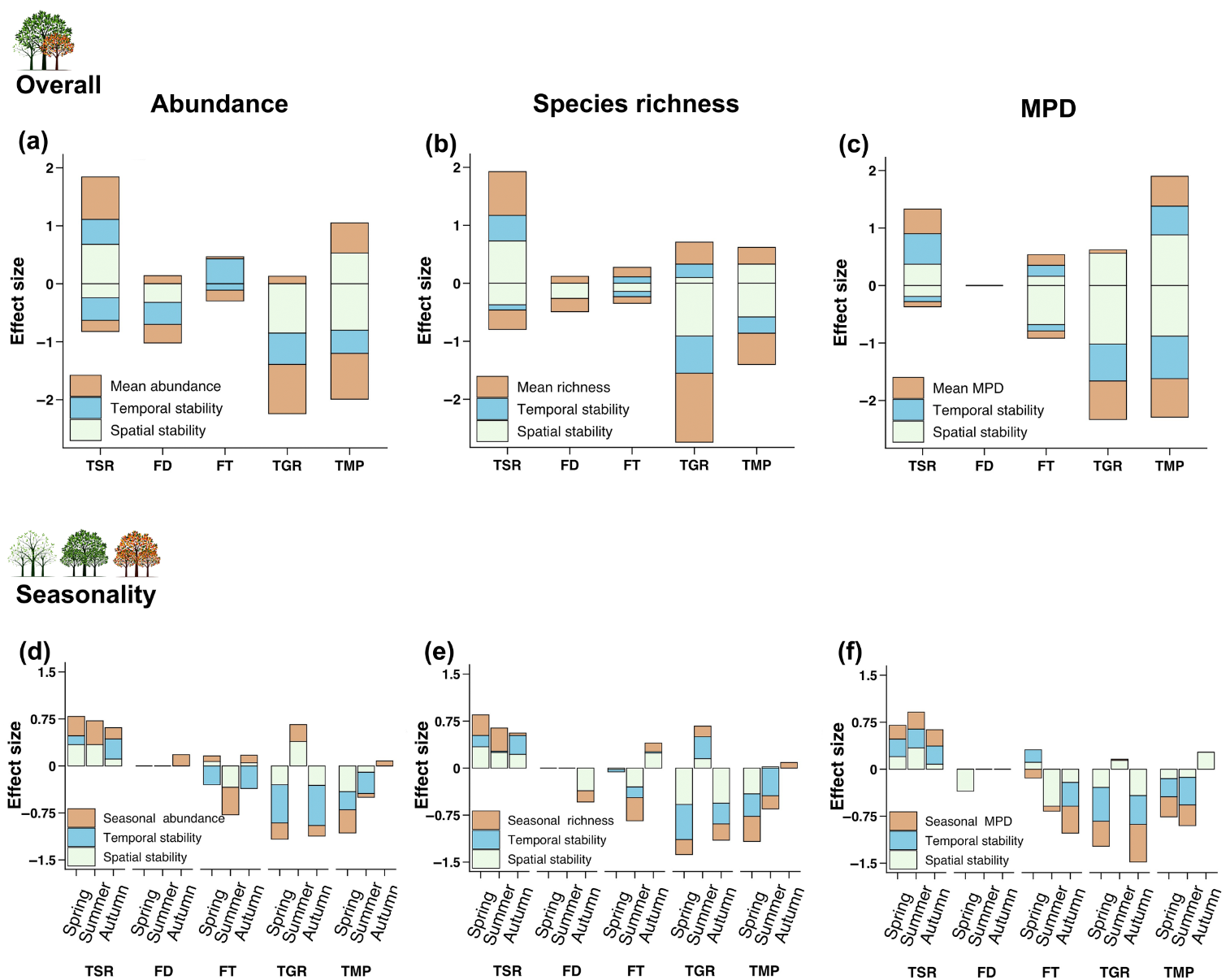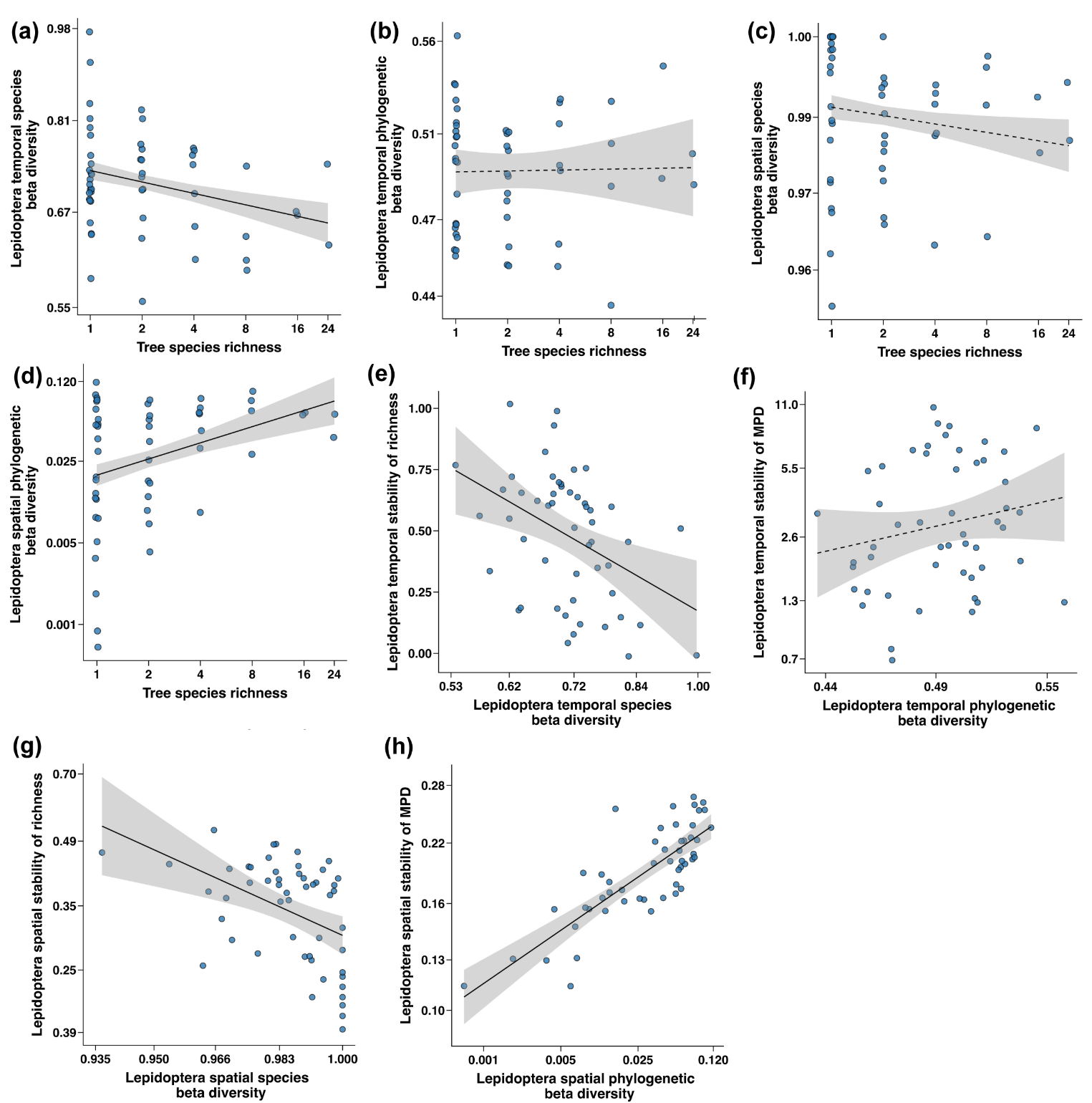Forests worldwide are increasingly challenged by environmental change, which drives biodiversity loss and heightens the risk of biotic disturbances such as insect outbreaks. While research has often emphasized plants when assessing biodiversity–ecosystem function relationships, higher trophic levels like herbivores are equally important, both for ecosystem functioning and as drivers of disturbances. Understanding the mechanisms that govern herbivore community stability is therefore crucial for both ecological theory and forest management.
A recent study led by led by Ming-Qiang Wang, Arong Luo, Chao-Dong Zhu and Andreas Schuldt from the Chinese Academy of Sciences and University of Göttingen, together with the Institute of Botany (CAS), addressed this question using six years of data from the BEF-China forest biodiversity experiment. The team monitored 17,850 Lepidoptera larvae representing 870 MOTUs to uncover how tree diversity, tree growth, functional traits, and microclimate jointly influence the temporal and spatial stability of herbivore communities in subtropical forests.
The researchers found that herbivore communities fluctuated strongly over time, broadly tracking seasonal climate, especially winter temperature and precipitation. Yet tree species richness consistently buffered these fluctuations, enhancing both temporal and spatial stability of larval communities. By promoting stability, tree diversity exerted stronger positive effects on community abundance, richness, and phylogenetic diversity than the counteracting influences of functional diversity, tree growth, or climate variability. The stabilizing role of diversity was further reflected in reduced spatiotemporal turnover and more consistent community composition, while increased phylogenetic complementarity among species lineages contributed to long-term resilience.
These findings highlight that tree diversity acts as a key ecological regulator, mitigating the adverse impacts of climate variability on herbivore communities. In contrast, tree growth dynamics and microclimate exerted largely independent influences, suggesting that multiple bottom-up pathways jointly shape herbivore stability. As global biodiversity continues to decline, such stabilizing mechanisms may weaken, raising the risk of insect outbreaks.
The study, published in Ecological Monographs and titled “Tree diversity, tree growth, and microclimate independently structure Lepidoptera herbivore community stability”, provides new evidence for how biodiversity fosters resilience in forest ecosystems. It also lays a theoretical foundation for exploring plant–herbivore asynchrony and top-down regulation by natural enemies, offering valuable insights for forest management under global change.
The research was supported by the National Key Research Development Program of China (2022YFB0802300), the Science & Technology Fundamental Resources Investigation Program (2023FY100203), the National Natural Science Foundation of China (32100343, 32330013), and the Key Laboratory of the Zoological Systematics and Evolution (2008DP173354). Ming-Qiang Wang was funded by the Alexander von Humboldt Foundation, while Andreas Schuldt’s team received support from the German Research Foundation (SCHU 2609/4-1).

Figure 1. Relationships of the overall caterpillar abundance and species richness with macroclimate and tree species richness across seasons and years.

Figure 2. Effects of tree diversity on caterpillars via bottom-up regulation. Direct and indirect effects of trees (in green), tree growth (in orange), and microclimate temperature (in purple) on caterpillars (in blue gray) for abundance based on path model results.

Figure 3. Overall and seasonal effects of tree diversity on caterpillars via bottom-up regulation. Bars show summed effects of tree species richness (TSR), functional diversity (FD), functional trait composition (FT), tree absolute growth rates (TGR), and microclimate temperature (TMP) on overall (a) caterpillar abundance, (b) richness.

Figure 4. Relationships of overall caterpillar spatiotemporal beta diversity with tree species richness and the spatiotemporal stability of caterpillar richness and mean pairwise phylogenetic distance (MPD) across years. Relationships between tree species richness and caterpillar temporal beta diversity for (a) species richness and (b) MPD, and spatial beta diversity for (c) species richness and (d) MPD. Relationships between caterpillar temporal beta diversity and temporal stability indices for (e) species richness and (f) MPD, and between caterpillar spatial beta diversity and spatial stability indices for (g) species richness and (h) MPD.
Literature:
Ming‐Qiang Wang, Georg Albert, Douglas Chesters, Helge Bruelheide, Yi Li, Jing‐Ting Chen, Sylvia Haider, Shan Li, Goddert von Oheimb, Tobias Proß, Florian Schnabel, Bo Yang, Qing‐Song Zhou, Keping Ma, Xiaojuan Liu, Chao‐Dong Zhu, Arong Luo*, Andreas Schuldt. 2025. Tree diversity, tree growth, and microclimate independently structure Lepidoptera herbivore community stability. Ecological Monographs. 95(3):e70026. https://esajournals.onlinelibrary.wiley.com/doi/10.1002/ecm.70026.

